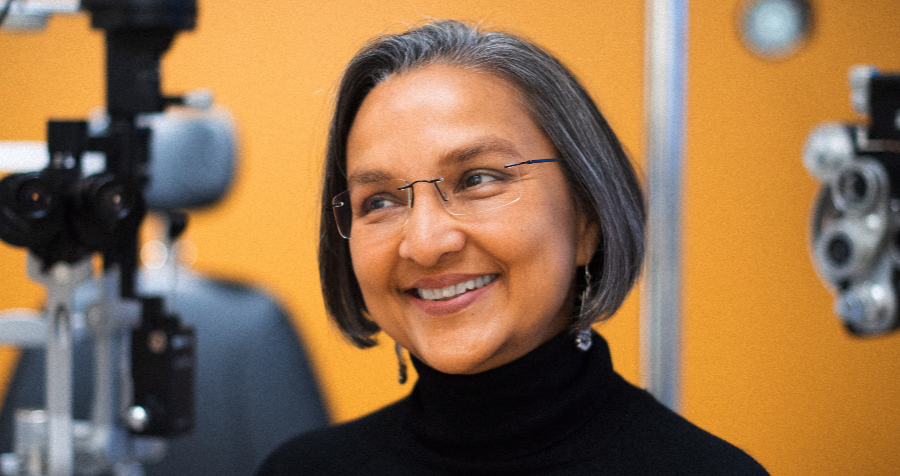Women, here's what you need to know about dry eye

Seema Capoor, MD, is an ophthalmologist at UK Advanced Eye Care who specializes in cornea and external diseases.
The fact is that if you’re a woman, you’re more likely to suffer from dry eye. Symptoms like stinging, light sensitivity and itchiness can range from being a nuisance to having serious consequences on your eye health.
Let’s break down what dry eye is, why it happens to women at higher rates and what can be done about it.
What causes dry eye?
Dry eye can occur because of:
1. Decreased tear production. The biggest culprit is age. For women, menopause and autoimmune diseases make things worse, but for all of us, as we age, we make fewer tears.
2. Decreased blink rate. Age,diseases like Parkinson’s and certain medications can reduce your blink rate. Even activities like watching TV, reading and working on a computer can affect how often you blink.
3. Refractive eye surgery, like Lasik. During the Lasik procedure, nerves are cut, which can induce dry eyes.
Why does it affect women more often?
When women go through menopause, they can get dry eyes because of hormone changes that lead to reduced tear production.
Additionally, autoimmune conditions like rheumatoid arthritis, lupus and thyroid problems are more likely to affect women than men. These conditions all cause inflammation, and inflammation causes your eyes to make fewer tears.
At what point should someone talk to a doctor about this?
If your vision starts to become blurry or if it’s causing discomfort or discharge, that would be a good point to seek help.
What happens if dry eye is left untreated?
Major vision issues as well as infections can occur. If severe enough, dry eye can actually lead to a hole in the eye.
This does need to be addressed, especially with severe dry eye.
What treatment options are available?
We always start with supplementing our normal tear production. There are many artificial tears that are sold at drugstores. You don’t have to go to a specialty pharmacy, nor do you need to get prescription drops.
You can start using them four to six times a day and can go up to every hour.
If you have to use the tears more than four to six times a day, I usually recommend preservative-free drops because they’re less irritating to the surface of your eye.
If the tears stop working, we can escalate treatment with other steps, like medications and procedures. I can block the outflow of tears from the eye by putting a little plug in the outflow duct. It’s like putting a plug in a sink to keep the water from draining.
Oftentimes, the treatment is recognizing the underlying disease. People who don’t know they have lupus or thyroid problems come to us with dry eyes, and we direct them to their physicians so that the underlying cause can be treated, too.
What’s the benefit of being treated at UK HealthCare?
We have three corneal specialists, including myself, at UK. The more severe cases of dry eye are better addressed by a corneal specialist because this is what we’re specialized to treat.





